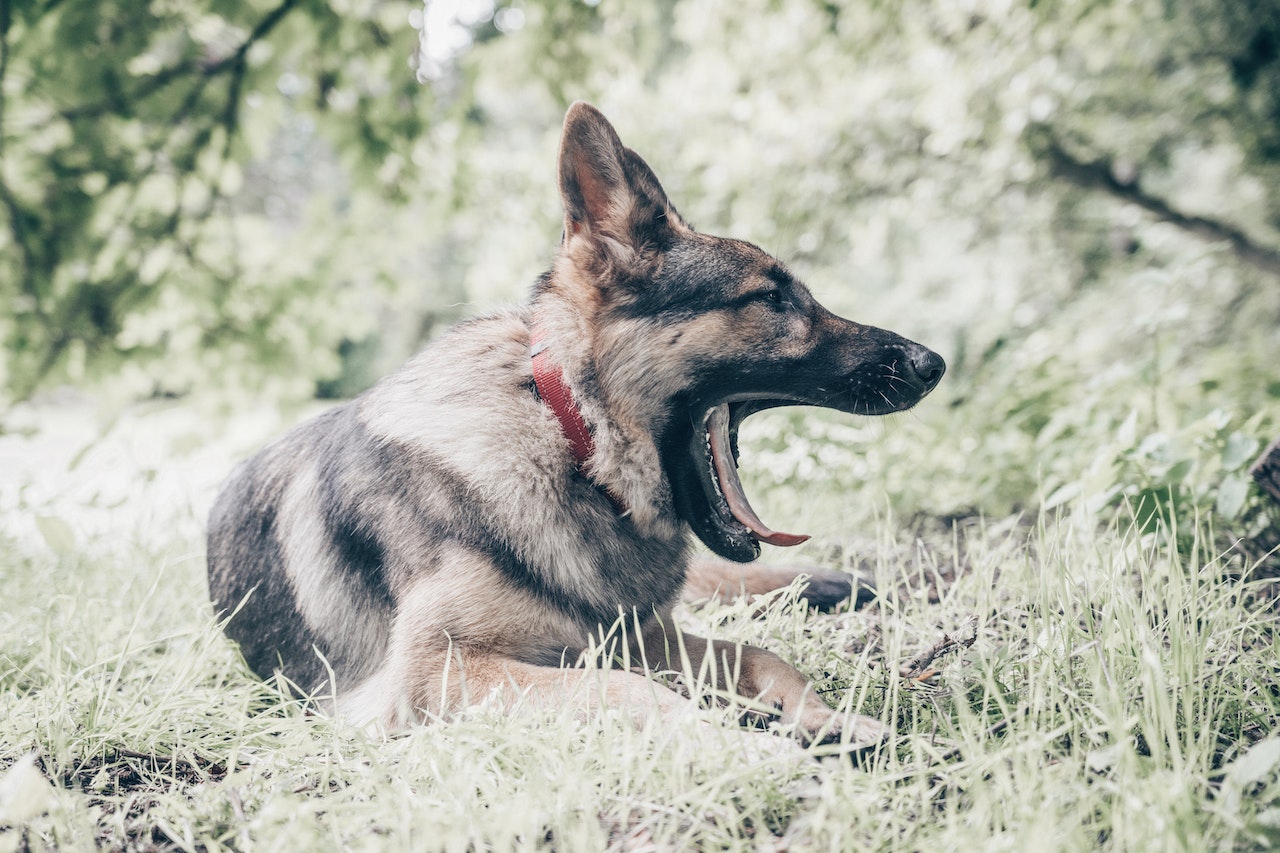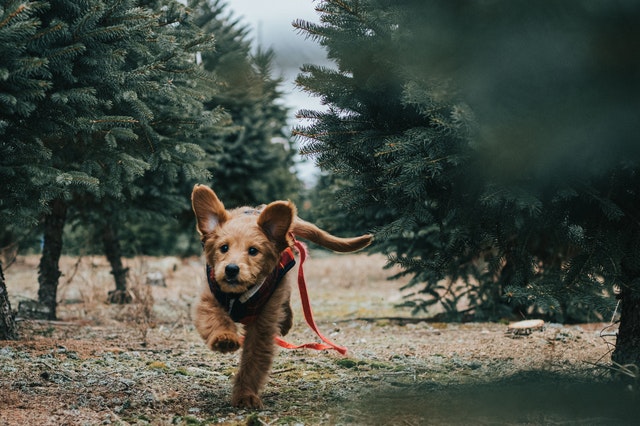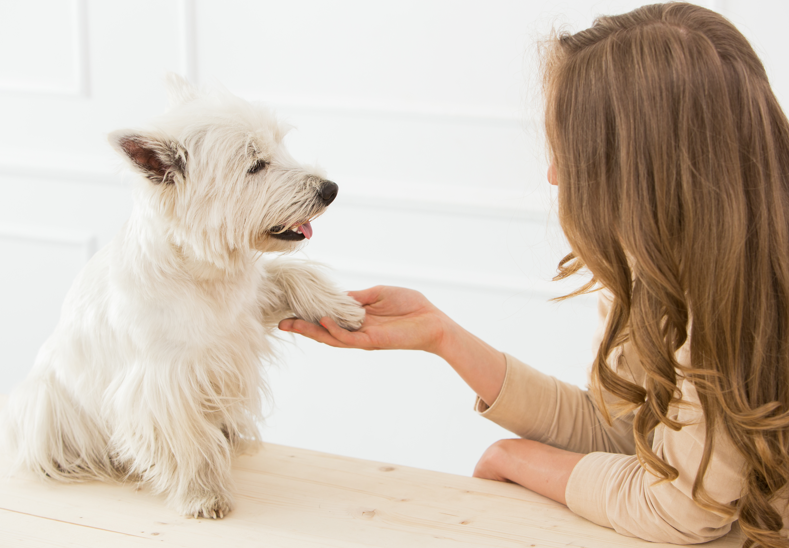
According to the American Veterinary Medical Association, there are no reliable statistics on dog-on-dog aggression. However, the Insurance Information Institute posted that insurers paid out $1.57 billion in dog-related injury claims in 2024. The American Pet Products Association (APPA) released a 2025 State of the Industry Report, where we read that pet ownership has increased for both dogs and cats, with 51% of U.S. households (68 million) owning a dog and 37% of U.S. households (49 million) owning a cat. A silver lining to the abundance of felines and canines on the street is that 57% of dogs and 64% of cats entering organizations were adopted in 2024, as pointed out by the World Animal Foundation.
The issue of dog aggression is not to be underestimated, and we want to talk more about it.
The term “aggression” refers to a wide range of behaviors that occur for a multitude of reasons in various circumstances. If you are trying to determine whether a dog is “aggressive,” you will need to understand canine body language first and take into consideration many factors. Dog-on-dog aggression is usually preceded by warnings and can eventually culminate in an attack. Dogs may discontinue their efforts at any point during an aggressive episode.
What Canine Body Language Should You Be Monitoring For?
You never know when you might encounter a risky situation with a dog. Even if you know all the dogs in your neighborhood, do not make the mistake of assuming all your interactions with the local dogs will be the same at any time. Any number of things could cause a dog to act out, even if there haven’t been any prior problems with that dog. A dog that shows aggression to people and other dogs usually exhibits the following increasingly intense behaviors.
These behaviors are considered warnings:
Becoming very still and rigid — if you see your dog or another dog do this, immediately try to pull your pet away and disengage. We recommend keeping your dog on a harness instead of a leash most of the time. This enables you to more easily pull away your dog. If the other animal is off-leash, try to put as much distance between you and the other dog and try to obstruct their line of sight to your dog.
Guttural bark or growling that sounds threatening and snarling (a combination of growling and showing teeth) — this is easy to spot, and you should put some distance between the dogs immediately.
Direct staring — if a dog is intensely staring at another dog with a fixed gaze, it can be a sign of aggression. This is often a dominance display. Keep your canine close to you and do not let them approach the other dog.
Raised hackles — when a dog's fur stands up along the back of their neck and spine, it's a sign of arousal or aggression. Keep your canine close to you and do not let them approach the other dog.
Note: If you are walking your dog and you see another dog pass by that may stare at your paw companion, and their fur stands up, try to make space between the dogs to not let them touch. You may want to stand between the dogs as you pass by.
Showing teeth – if you see your dog or another dog do this, please try to put distance between the dogs. Dogs show teeth when they feel threatened and want to communicate they will take defensive actions if necessary.
Lunging forward or charging at a perceived threat, which may include snapping (a quick clenching of the jaw) – as mentioned above, we recommend keeping your dog on a harness so you have better control of their core body. This will enable you to respond quickly and pull away the dog.
These behaviors indicate escalating aggression:
Mouthing, as though to move or control the perceived enemy;
“Muzzle punch” (the dog literally punches the perceived enemy using their nose);
Quick nip that leaves no mark;
Quick bite that tears the skin;
Bite with enough pressure to cause a bruise;
Bite that causes puncture wounds;
Repeated bites in rapid succession;
Bite and shake;
Dogs don’t always show just one sign, keep a close eye on your dog and the other dogs and people around you. Do not walk your dog while you are focused on your phone, this prevents you from recognizing and stopping risky situations that can put you and your dog in harm’s way.
Sometimes in a park or on the street, you could be confronted with an off-leash dog. Your best move is to walk away calmly and slowly if you encounter a dog this way. If the dog is displaying aggressive behaviors, contact authorities immediately and report the dog’s location and appearance. Avoid engaging with the potentially dangerous canine and caution others (particularly children) to remain calm and avoid engaging with the dog. Running children may be perceived as prey or threats so try to assist others in moving away from a dog that may appear aggressive.
How to Pull Two Fighting Dogs Away From Each Other
It's essential to prioritize the safety and well-being of animals and to report such activities to the appropriate authorities, such as local law enforcement or animal welfare organizations. Allow trained professionals to handle the situation and investigate any illegal activities involved in dog fighting.
If you come across a situation where two dogs are fighting, your primary concern should be your safety. Attempting to physically separate two aggressive dogs can be extremely dangerous and may result in serious injuries to yourself and the animals. Instead, here are some steps you can take to help more safely:
Call for Help
Do not run and hide. Contact your local animal control, police, or an animal rescue organization to report the incident. Provide them with as much information as possible, such as the location, description of the dogs, and any other relevant details.
Make Noise
Shout loudly and create a commotion to attract the attention of others who may be able to assist. The presence of bystanders can help deter the dogs from continuing to fight.
Use Distractors
If you have any available, try using loud noises, water hoses to spray the dogs, or even throwing a blanket over the dogs to distract and disorient them. Another effective tool that you can use is a pepper spray. SABRE Protector Dog Spray is a humane, effective, and all-natural dog pepper spray that can be used against attacking dogs as well as to distance two fighting dogs. It is effective at ranges between 12 to 15 ft (4 to 4.5 m) and includes 14 to 18 one-second bursts. Pepper-spraying a dog is not illegal and does not leave the animal with permanent damage. Please, consult your veterinarian for more details.
Avoid Physical Intervention
Do not attempt to physically separate the dogs unless you are trained in handling aggressive dogs. This can lead to injuries and escalate the situation.
Don’t Try to Separate Fighting Dogs by Putting Yourself or Your Hand Within Their Reach.
Even if it is your dog who is acting aggressively and you think there is no way they would dare to bite you, you are wrong! While engaged in a fight, dogs will bite whatever is within their reach as they are in survival mode. Placing your hand within reach of either dog is very dangerous and discouraged. Your safety and the safety of others should be the top priority when encountering such a situation.
We Can’t Always Read a Dog’s Body Language Accurately
Dogs, just like people, have their own unique personalities. Sometimes a dog that yawns may simply indicate they are bored, other times, this can be interpreted as a signal they feel nervous. Dog tail movement can be complex, and you need to consider the dog's environment if you are trying to decipher what it means. Do not assume that all dogs communicate the same way, just like humans, dogs have different levels of tolerance and patience and respond differently to perceived threats.
If a canine is relaxed and friendly and seems happy to see you, it is safe to assume they are in a good, playful mood and will welcome your attention. If a canine won’t look at you or is avoiding you by walking or turning away, it’s best to stay away and leave them be. If the dog appears tense and nervous, exhibits a stiff posture, and has perked-up ears or seems to be staring at you, you’ll want to move away calmly and avoid any interactions with the dog.
If you want to meet a dog that you are not familiar with, it is safest to talk to their owner to help you understand the pet’s mood. Always ask the owner’s permission before you attempt to pet a dog that you do not know or try giving them a treat. If you are interested in learning more about how to protect your dog and assist them in an emergency, please check our article “Dog First Aid Kit”. The American Society for the Prevention of Cruelty to Animals has a wonderful page with more details on common dog behavior issues right here.










